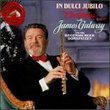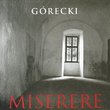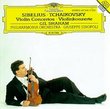| All Artists: George Antheil, Hugh Wolff, Hugo Wolf, Frankfurt Radio Symphony Orchestra Title: George Antheil: Symphony No. 3 "American" Members Wishing: 1 Total Copies: 0 Label: Cpo Records Release Date: 11/16/2004 Genres: Special Interest, Classical Styles: Forms & Genres, Theatrical, Incidental & Program Music, Historical Periods, Modern, 20th, & 21st Century, Symphonies Number of Discs: 1 SwapaCD Credits: 1 UPC: 761203704026 |
Search - George Antheil, Hugh Wolff, Hugo Wolf :: George Antheil: Symphony No. 3 "American"
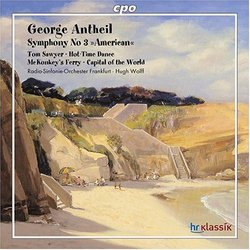 | George Antheil, Hugh Wolff, Hugo Wolf George Antheil: Symphony No. 3 "American" Genres: Special Interest, Classical George Antheil was one of the craziest and most original composers to come out of twentieth-century America, and his life was just as exciting and restless. The Bad Boy of Music, as he aptly termed himself in his autobiogr... more » |
Larger Image |
CD DetailsSynopsis
Album Description George Antheil was one of the craziest and most original composers to come out of twentieth-century America, and his life was just as exciting and restless. The Bad Boy of Music, as he aptly termed himself in his autobiography, was not a man for small flames but, from the scandalmonger of the Ballet Mécanique to the serious composer of symphonies, fired up the engines in his quest for his own ego. In the process, he was unsystematic, unorganized, and firmly believed that talent and genius could do it all. Fortunately, fate mostly agreed with him. The chaos of the catalogue of his works and the state of his scores and performance materials, however, bring despair to those who today undertake to sort through his work. We thus are proud to announce, for the first time on CD, Antheil?s Symphony No. 3, composed during 1936-39. It is an American symphony....It is the America of the future, bold, fearless, new, and coming from the very breath of the new continent. The encores also have the appropriate American flair: the Tom Sawyer and McKonkey?s Ferry overtures, the jaunty Hot Time Dance, and the suite to the ballet The Capital of the World. Similar CDs
Similarly Requested CDs
|
CD ReviewsSimply Terrific Music D. A Wend | Buffalo Grove, IL USA | 03/23/2005 (5 out of 5 stars) "The theme of the CD is music by George Antheil reflecting themes of Americana, and what a fabulous disc it is. After his return to the United States in 1932, George Antheil got some much needed work writing film scores. The Third Symphony was begun in 1936 and completed in 1939. Briefly, it was numbered as his Second Symphony, which was undergoing revision, and the new symphony was also known as the American Symphony. The score has elements of America woven into the music. The long period of composition coincided with George Antheil's re-discovery of America. He eventually settled in California but spent some time traveling during these years from New York to the South and the Western states. The opening Allegro movement immediately sweeps you up as the pictorial qualities of the music become immediately apparent. There is a lot of music in this movement as if the composer was so excited that he put too much material in it. The result is an exciting start to this symphonic journey. The second movement carries the journey onward. For me, it presents a musical picture of the American West. The themes have a Hispanic influence and there is a dance theme that reminded me of Elmer Bernstein. The third movement, The Golden Spike, was influenced by his music for the film Union Pacific rather than a direct relationship of the driving of the golden spike in 1869. There is a boisterous quality to the music, a bit like Copland, and Antheil also makes use of a theme from Sibelius' Fifth Symphony. The final movement, Back to Baltimore, conjures up visions of the American east coast but has been thought to represent California in character. The music has a sound something like Shostakovich but the style of Antheil's music was set early in his career in works like his opera Transatlantic (first performed in 1930). While we may think of Shostakovich (particularly in the use of the xylophone) it is not the kind of development that the Russian composer would have written. Tom Sawyer was commissioned by the St. Louis Symphony. It is dance-like in its themes and was also known as California Overture (but not known why the name was applied). The music sounds like a blending of the Third and Fourth Symphonies: charming and witty. The Hot Time Dance was composed in 1948 and was first played by the Boston Pops. The music has a distinct American flavor and seems influenced by the Romanian Rhapsody's of George Enescu. The opening clarinet solo is particularly evocative of Romanian themes, and the piece goes on exploring Americana variations. Mc Konkey's Ferry was composed to illustrate the famous painting of the crossing of the Delaware River by Washington in 1776. It is an atmospheric overture that sets out to depict the well-known scene. In a way, one could say this is film music for the crossing. The Capitol of the World is a ballet composed in 1952, based on a short story by Ernest Hemingway. The story centers around bullfighting with Madrid as the capitol of the world. The protagonist Paco dreams of conquering his fear of the bull ring and becoming a famous matador. The suite from the ballet is recorded here and reveals what wonderfully colorful and captivating dance music it is. Reflecting upon the story, the music is influenced by Spanish rhythms, with the contrasts of light and dark on expects from the music of De Falla. I highly recommend this CD, particularly if George Antheil is new to you. Antheil was one of the most popular American composers in the 1940s and 50s but today he is hardly known. This needs to be changed. The informative booklet has is very detailed to the point of being a short biography of the composer. I noticed that these performances were recorded in 2001; what took so long to get them on CD? I look forward to more music by George Antheil played by the Radio-Sinfonie-Orchester Frankfurt and Hugh Wolff. " Epigonic Discophage | France | 04/29/2007 (2 out of 5 stars) "I am beginning to have some doubts about the music of George Antheil. In the first half of the twenties, Antheil (1900-1959) was one of the great maverick innovators of American Music. The music he composed between 1921 and 1925, culminating in the famous and infamous "Ballet Mécanique", is provocative, inventive, daring and fun. But, although it made him the fad of the Paris salons, Antheil grew dissatisfied with that style of composition, later calling it "great empty chic". He strove for the wider symphonic form. The Third Symphony "American" was slow into being. According to Antheil's autobiography "Bad Boy of Music" it was commenced in the Summer of 1931, but left aside until 1936, and completed only at the turn of 1941/2. In all those years Antheil had gone through dire straits, dabbled in this and that - writing film music, devising improbable and short-lived schemes destined to bring him a fortune - and was unable to focus. The liner notes' outline of the symphony's gestation does not conform to what Antheil writes. Apparently based on the scholarly research of Linda Whitesitt, they maintain that Antheil actually composed TWO Third symphonies: one begun in 1931 and uncompleted by 1938, and this one, its instrumentation begun in 1936 and completed in 1939. All Antheil mentions is that when he resumed work in 1936 he first completely revised the symphony's first movement. Anyway, Antheil appears not to have solved his BIG problem with imitation. Direct Stravinsky quotes abound in his early compositions, but then they are integrated in a musical language that goes far beyond Stravinsky's, in its formal processes (succession of melodic cells with strong rhythmic bite, hardly any development) and its revelling in producing racket for its own sake, so therein Antheil's use of Stravinsky can be viewed as a forerunner of post-modern Collage techniques (see my reviews of George Antheil: Violin Sonatas 1, 2 & 4 , Piano Concertos of the Twenties and George Antheil: Symphonies 1 & 6). Not so with the later works. It was often remarked, then and now, that the compositions he wrote during and immediately after the war (starting with the 4th Symphony, which was premiered by Stokowski in 1944 and signalled a significant if temporary turn of fortunes for the composer) bore strong resemblances with the war compositions of Prokofiev and Shostakovich (for the Prokofiev influence in the late piano sonatas see my review of George Antheil: The Lost Sonatas); but in my opinion their bombast points even more to Myaskovsky (see my review of Symphony # 6 referred to here above). Such connotations can be heard in the Finale of the Third as well, and also in the McKonkey's Ferry Overture from 1948. Antheil claimed he was there first, and as early as his Opera "Transatlantic" (1930). Maybe so, but in Shostakovich the bombast is the accident, in Antheil it is the norm. But that is not all. As he was struggling with the symphonic form, Antheil professed his admiration for and busied himself with an in-depth study of the symphonies of Mahler, Bruckner and Sibelius (of the latter's, he expressed his particular fondness for the Fifth). And sure enough: the Third's second movement starts with a Bruckner-like brass chorale, only to go on with an elaboration of the third movement of Mahler's First (the striking "Bruder Jacob" movement). The Third movement has another Brucknerian chorale, leading into a boisterous and festal elaboration of American popular tunes - only to slide into a baffling, direct quotation of a passage of Sibelius' Fifth. What is the message? That nothing sounds more genuinely American than Mahler's "Angst" or Sibelius' epic vistas? To me it only sounds like immature, undigested influences. No wonder Antheil later considered that his Third hadn't "thoroughly digested American color". More imitation still in the "Hot-Time Dance" from 1948 - this time around, it is Enescu's Rumanian Rhapsodies and Khachaturian's Sabre Dance (1939-41). It was composed for the Boston Pops and, as ever, Antheil appears to be vying for the audience's claps; with only the nature of the audience and hence the musical means changed. The Symphony's first movement is more personal. A pointer to the earlier Antheil lies in is his abiding taste for jarring succession of unrelated motives, although these are now more cogently integrated in a transformation and combination process unfolding over a longer span of time. Antheil is also capable of composing a lyrical theme of sweeping Sibelian intensity. The moods vary in rapid succession, from the (at times bombastically) heroic to the pastoral, by way of the pre-Bernstein-Broadway bounce. But then, whatever the interest of the movement's formal procedures, the musical language is not very personal nor advanced for its time and many ideas seem trite. It is the "Americana" of Copland and Thomson rather than of Ives, and the same is true with the 1949 "Tom Sawyer" Overture. In his bio Antheil complains that writing film music diverted his energies from his "serious" compositions (and specifically the Third) and ultimately corrupted them: "My symphonic writing incorporates corny movie-music solutions". Well, this is exactly what I hear in much of the Symphony as well as in the Overtures. Colorful and lively but, again, heard before, the 17-minute Ballet-suite "Capital of the World", after a Hemingway sarcastically sinister short story about a failed bull fighter in Madrid. The suite is not just a collection of excerpts but an elaboration of some of the ballet's material into a fast-slow-fast symphonic shape. Its "Spanish tunes" are less the authentic Spain of de Falla than one that might have been depicted by Sauguet or Milhaud, or again Fallas's Spain seen through the prism of Hollywood. I prefer the complete ballet (which can be found on Antheil: Capital of the World/Symphony 5/Archipelago): it contains more ideas, so each of them seems less trite than when mono-thematically elaborated as in the suite. If you are satisfied with epigones, you might enjoy this disc. If you want to hear what is unique to Antheil, go to his early works. The notes are wordy but interesting and informative, with some translation errors. " Great CD Miles Massicotte | Bristol, CT, USA | 02/01/2005 (5 out of 5 stars) "I always wanted to hear Antheil's Third Symphony. I want to hear everything he wrote, but it is hard to come buy. Most of his music is sadly unpublished, and rarely recorded. I am always on the lookout for new Antheil, and this was great. I would especially check out the Hot-Time Dance and Tom Sawyer California Overture. Post-war/neoclassic Antheil at its best!"
|

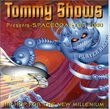

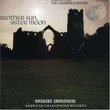

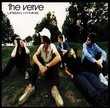
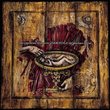
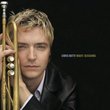
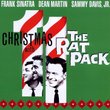
![Across The Universe [Deluxe Edition]](https://nationalbookswap.com/cd//m/51/1251/1241251.jpg)
